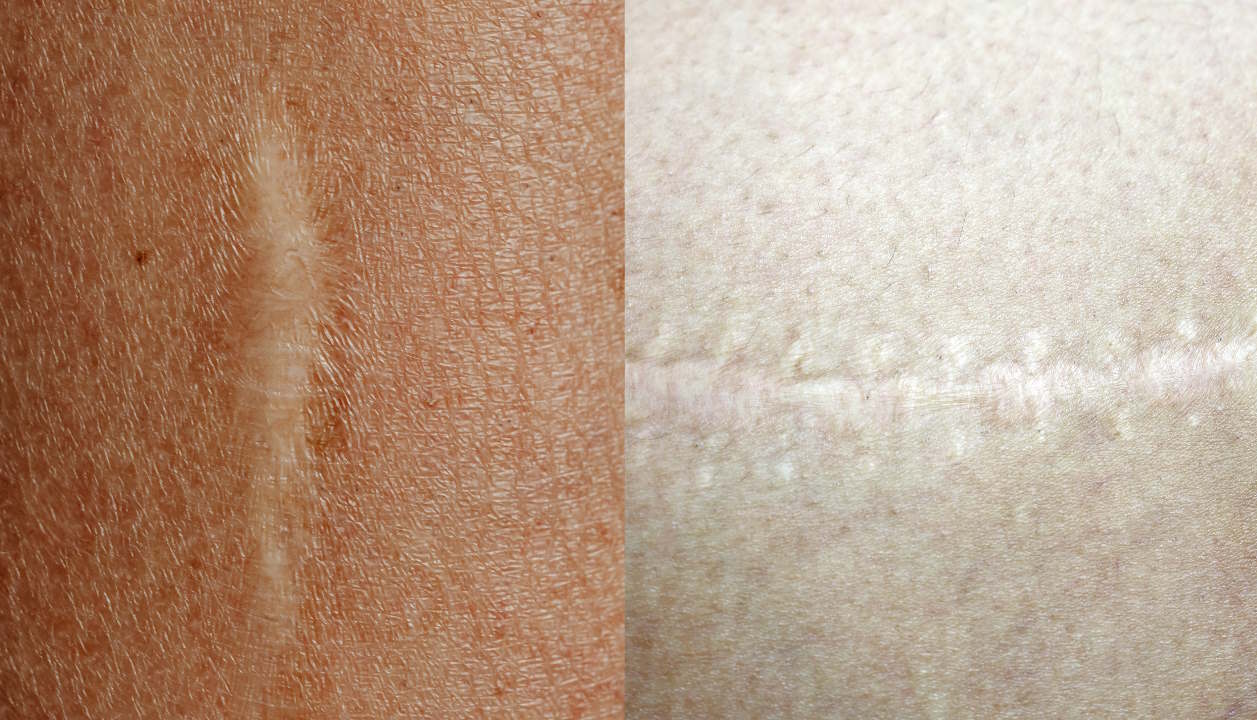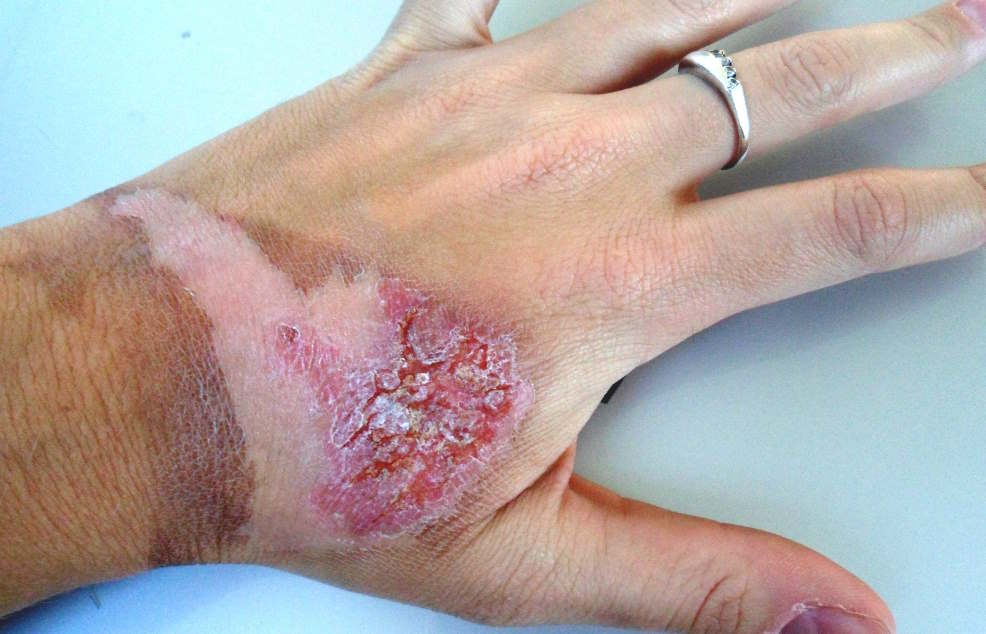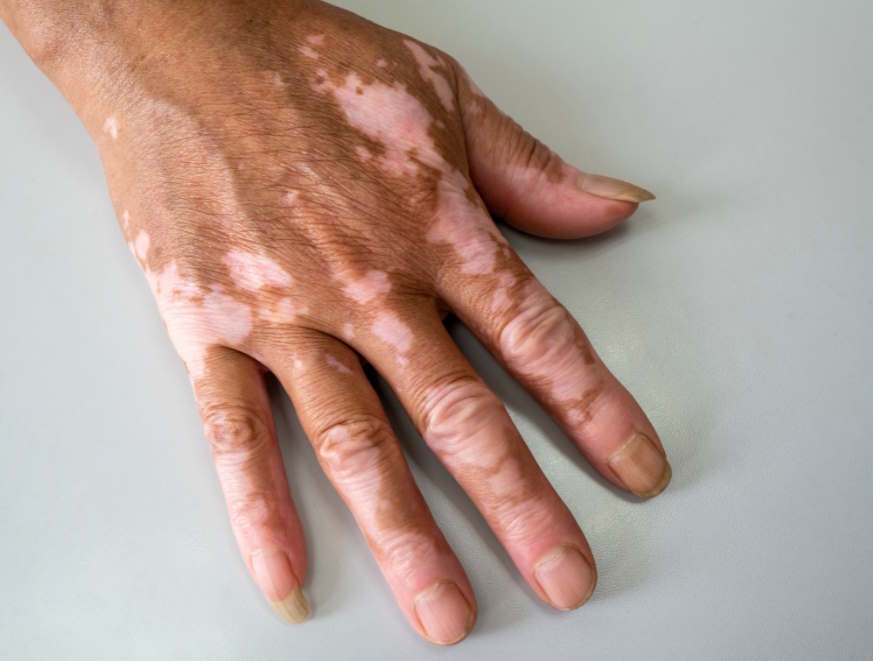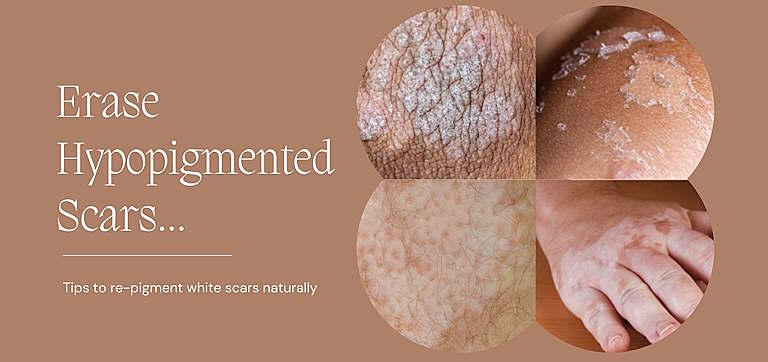How to Re-Pigment White Scars Naturally | A Comprehensive Guide
Table of Contents
There are various types of scars distinguished by their pigmentation characteristics, including hyperpigmented scars, which appear darker due to excess melanin, and hypopigmented scars, known for their lighter appearance due to melanin deficiency. In this article, our focus will be on hypopigmented scars, commonly referred to as white scars.
We will delve into understanding why these scars form, exploring effective natural treatments, and emphasizing the importance of seeking professional guidance to identify the type and cause of these scars before determining the most appropriate treatment options.
Definition of White Scars
White scars, clinically known as hypopigmented scars, occur when an area of skin loses its normal pigment following an injury or skin condition. Unlike hyperpigmented scars, which appear darker than the surrounding skin due to an excess of melanin, hypopigmented scars are lighter because they lack sufficient melanin.
These scars can develop after various types of skin damage, such as cuts, burns, surgical incisions, or inflammatory skin conditions like eczema or psoriasis. The result is a patch of skin that contrasts starkly with the rest of the surrounding tissue, often causing cosmetic concerns.
Causes of White Scars
Hypopigmented scars arise due to the disruption or destruction of melanocytes, the cells responsible for producing melanin, the pigment that gives skin its color. Several factors can contribute to the formation of these scars:
- Injury or Trauma: Physical damage to the skin, such as cuts, abrasions, or surgical incisions, can disrupt the normal production of melanin, leading to hypopigmentation.
- Burns: Thermal or chemical burns can destroy melanocytes in the affected area, resulting in white scars.
- Skin Conditions: Chronic skin conditions like eczema, psoriasis, or vitiligo can impair melanocyte function and cause hypopigmentation.
- Inflammation: Post-inflammatory hypopigmentation can occur after skin inflammation due to acne, infections, or allergic reactions.
Are White Scars Permanent?
The permanence of white scars depends on several factors, including the extent of skin damage, the underlying cause, and the body’s ability to heal and regenerate pigment. While some white scars may remain indefinitely, others can improve over time with proper treatment and care.
- Severity of Skin Damage: Deep or extensive damage to the skin, particularly to the basal layer where melanocytes reside, is more likely to result in permanent hypopigmentation.
- Type of Injury: Burns and surgical scars often result in more persistent white scars compared to minor cuts or abrasions, which may heal more completely.
- Skin Condition: Chronic skin conditions like vitiligo are more likely to cause long-lasting or permanent hypopigmented patches. In contrast, post-inflammatory hypopigmentation from acne or minor infections may gradually repigment over time.
- Age and Skin Type: Younger individuals and those with darker skin types may experience better outcomes in repigmentation due to higher melanocyte activity and regenerative capacity.
- Treatment Interventions: Early and appropriate treatment can significantly influence the outcome. Topical therapies, laser treatments, and other medical interventions may help stimulate melanin production and improve the appearance of white scars.
While some white scars may prove challenging to treat, advances in dermatological therapies and a better understanding of skin healing processes offer hope for many individuals seeking to restore their skin’s natural pigmentation.
Treatment Options for White Scars Based on Their Types
-
Injury or Trauma
Physical damage to the skin, such as cuts, abrasions, or surgical incisions, can disrupt the normal production of melanin, leading to hypopigmentation.

Here are treatment options for such cases:
Natural Treatments
- Aloe Vera Gel: Aloe vera is renowned for its soothing and healing properties. It can help reduce inflammation, promote skin regeneration, and improve pigmentation in hypopigmented scars. Regular application of aloe vera gel can aid in the healing process and enhance the skin’s natural ability to produce melanin.
- Honey: Honey has natural antibacterial and healing properties that can aid in skin regeneration. It also helps to keep the skin moisturized and can improve the texture and appearance of scars. Applying honey to the affected area can support the skin’s healing process and promote even pigmentation.
- Rosehip Oil: Rosehip oil is rich in essential fatty acids, vitamins A and C, and antioxidants. These components help repair damaged skin, improve skin elasticity, and promote the regeneration of skin cells. Rosehip oil can be particularly effective in reducing the appearance of scars and enhancing skin tone.
OTC Medications
- Mederma Scar Therapy Cream: This cream contains allantoin, an ingredient known for its ability to promote skin healing and soften scar tissue. It helps reduce the appearance of scars by keeping the scarred area moisturized and promoting collagen production, which is essential for skin regeneration.
- SCARXGEN Silicone Scar Gel Sheets: These silicone sheets are designed to flatten and lighten scars by providing a protective barrier that enhances hydration. The consistent pressure and hydration from the sheets can soften scar tissue, leading to a more even skin tone. They are particularly effective for raised and discolored scars.
Advanced Professional Treatments
- Laser Therapy: Laser therapy involves using focused light beams to remove the outer layer of scarred skin and stimulate the production of new, healthy skin cells. This treatment can significantly improve skin texture and pigmentation by encouraging melanin production in the affected area. Different types of lasers, such as fractional lasers, can be tailored to target specific scar characteristics.
- Microneedling: Microneedling uses tiny needles to create controlled micro-injuries in the skin. These micro-injuries stimulate the body’s natural healing process, boosting collagen and melanin production. Over time, this can improve the appearance of hypopigmented scars by promoting the growth of new, evenly pigmented skin.
- Chemical Peels: Chemical peels use acids (such as glycolic acid, lactic acid, or trichloroacetic acid) to exfoliate the top layer of the skin. This process removes dead skin cells and encourages the growth of new, pigmented skin. Chemical peels can be effective in treating superficial scars and improving skin tone and texture.
-
Burns
Thermal or chemical burns can destroy melanocytes in the affected area, resulting in white scars.

Treatment options include:
Natural Treatments
- Aloe Vera: Aloe vera is known for its soothing and healing properties, making it an excellent treatment for burn scars. It helps to reduce inflammation, promote skin regeneration, and improve pigmentation. Applying aloe vera gel to the affected area can enhance the healing process and improve the appearance of burn scars.
- Coconut Oil: Coconut oil is rich in fatty acids and antioxidants that moisturize and nourish the skin. It can help reduce the appearance of burn scars by keeping the skin hydrated and promoting healing. Regular application of coconut oil can improve skin texture and pigmentation.
- Calendula Cream: Calendula has anti-inflammatory and healing properties that can aid in the treatment of burn scars. Calendula cream helps to soothe and repair the skin, promoting the regeneration of healthy skin cells. It can be particularly effective in reducing redness and improving the overall appearance of burn scars.
OTC Medications
- Silicone Gel Sheets (e.g., SCARXGEN Silicone Scar Sheets): Silicone gel sheets are effective in managing and reducing burn scars. They work by creating a protective barrier that keeps the scar hydrated and applies gentle pressure, which helps to flatten and soften the scar tissue over time. Consistent use can lead to improved skin texture and reduced scar visibility.
- Hexilak® Scar Treatment Gel: This gel containing Allium Cepa (onion extract), Heparin Sodium, and Allantoin, is designed to improve the appearance of scars, including those from burns. These ingredients help by promoting tissue regeneration, reducing inflammation, and softening the skin, potentially making scars appear softer and smoother.
Advanced Professional Treatments
- Fractional Laser Therapy: Fractional laser therapy uses precise laser beams to create micro-injuries in the scarred skin, promoting the production of new skin cells. This treatment can significantly improve the texture and pigmentation of burn scars by encouraging the regeneration of healthy skin. It is particularly effective for deep or extensive burn scars.
- Skin Grafting: This method involves transplanting skin from another area of the body to the scar site which is particularly useful for extensive hypopigmented scars.
- Stem Cell Therapy: Stem cell therapy is an emerging treatment that involves using stem cells to regenerate damaged skin and melanocytes. This therapy can potentially restore pigmentation in areas affected by burns by promoting the growth of new, healthy skin cells. It is a promising option for severe burn scars.
-
Skin Conditions
Chronic skin conditions like eczema, psoriasis, or vitiligo can impair melanocyte function and cause hyperpigmentation. Hypopigmentation, seen in vitiligo.

Here are some treatment options:
Natural Treatments
- Black Seed Oil: Black seed oil is known for its ability to improve skin conditions and pigmentation. It has anti-inflammatory and antioxidant properties that promote skin health and regeneration. Regular application can enhance skin tone and reduce the visibility of hypopigmented scars.
- Aloe Vera: Aloe vera is effective in soothing and healing the skin, making it a good natural treatment for hypopigmented scars caused by chronic skin conditions. It helps to reduce inflammation, promote skin regeneration, and improve pigmentation.
OTC Medications
- Topical Corticosteroids: Corticosteroids help reduce inflammation and promote skin healing in conditions like eczema and psoriasis. They can improve the appearance of hypopigmented scars by reducing redness and irritation.
- Protopic Ointment (Tacrolimus): Protopic is an immunosuppressive ointment used to treat eczema and vitiligo by modifying the immune response. It helps to reduce inflammation and promote repigmentation in affected areas. Protopic can be particularly effective for stubborn or severe cases.
- Vitamin D Analogues (e.g., Calcipotriene): Vitamin D analogs are used in the treatment of psoriasis to normalize skin cell production and improve pigmentation. Calcipotriene helps to reduce the scaling and redness associated with psoriasis, promoting healthier skin.
Advanced Professional Treatments
- Phototherapy: Phototherapy involves the use of UV light to stimulate melanocyte activity and improve pigmentation. This treatment is particularly effective for conditions like vitiligo and psoriasis. Controlled exposure to UV light can help restore pigment to affected areas and improve overall skin tone.
Hypopigmented plaques, are seen in psoriasis.
- Excimer Laser: The excimer laser targets specific areas of hypopigmentation with focused UVB light. This treatment stimulates melanocytes to produce melanin, promoting repigmentation in conditions like vitiligo. It is a precise and effective option for localized hypopigmented scars.
- Systemic Immunosuppressants: For severe cases of eczema or psoriasis, systemic immunosuppressants like methotrexate or cyclosporine can help control the condition and promote repigmentation. These medications work by modulating the immune system to reduce inflammation and improve skin health.
-
Inflammation
Post-inflammatory hypopigmentation can occur after skin inflammation due to acne, infections, or allergic reactions. Treatment options include:
Natural Treatments
- Green Tea Extract: Green tea extract has anti-inflammatory properties that soothe the skin and promote healing. It can help reduce redness and improve the appearance of post-inflammatory hypopigmented scars. Applying green tea extract to the affected area can enhance skin health and promote even pigmentation.
OTC Medications
- Niacinamide Serums: Niacinamide, also known as vitamin B3, helps reduce inflammation and improve skin tone, and regular use can help fade post-inflammatory hypopigmented scars.
- Tazret® Tazarotene Cream/Gel: This retinoid cream, containing tazarotenic acid, helps in cell turnover and reducing inflammation. It is beneficial for treating acne, preventing new acne outbreaks, and reducing scars, including post-inflammatory marks.
Advanced Professional Treatments
- Laser Resurfacing: Laser resurfacing improves skin texture and tone by removing the damaged outer layers of skin and promoting the growth of new skin. This treatment can be effective in reducing the appearance of post-inflammatory hypopigmented scars by stimulating collagen and melanin production.
- Microdermabrasion: Microdermabrasion is a non-invasive exfoliation technique that removes the top layer of skin, encouraging the growth of new, pigmented skin. It can be effective in treating superficial hypopigmented scars and improving overall skin texture.
Conclusion
In conclusion, addressing white scars requires understanding their type and cause before choosing a treatment hence, seeking advice from a dermatologist is crucial for accurate diagnosis and effective treatment.
This approach not only improves the chances of successful scar repigmentation but also supports overall skin health and emotional well-being. By making informed decisions based on professional guidance, individuals can optimize their efforts to manage and diminish the appearance of white scars, enhancing both their physical appearance and confidence.
FAQs
-
How to get pigment back in white scars?
Restoring pigment in white scars can be challenging and the type of treatment you need is determined by the type of white scars you have. However, treatments typically include topical medications like corticosteroids, laser therapy, microneedling, and in some cases, skin grafting.
-
Can white scars be improved?
Yes, white scars can be improved. Options include laser treatments, microneedling, chemical peels, and topical treatments. While complete restoration may not always be possible, these methods can help blend the scar with surrounding skin.
-
How do you get rid of hypopigmentation scars naturally?
Natural remedies for hypopigmentation scars include applying aloe vera, honey, or coconut oil, which can promote healing. Additionally, consistent moisturizing and protecting the area from sun exposure can aid in gradual improvement. However, natural methods may offer limited results and take longer to show effects.
-
How to turn scars white fast?
To lighten scars quickly, treatments like laser therapy, chemical peels, and topical bleaching agents are often used. A professional should perform these methods to ensure safety and effectiveness. Quick results may vary based on individual skin types and the nature of the scar.
References
- Madireddy S, Crane JS. Hypopigmented Macules. 2023 Jun 28. In: StatPearls [Internet]. Treasure Island (FL): StatPearls Publishing; 2024 Jan–. PMID: 33085392.
- Schmidt M, Serror K, Chaouat M, Mimoun M, Boccara D. Prise en charge des cicatrices hypopigmentées post-brûlure [Management of hypopigmented scars following burn injuries]. Ann Chir Plast Esthet. 2018 Jun;63(3):246-254. French. doi: 10.1016/j.anplas.2017.10.006. Epub 2017 Nov 16. PMID: 29153255.
- Burm JS, Lee YK, Young CJ. Treatment of Facial Hypopigmented Scars by the Laser Hole Technique Using a Nonfractional Carbon Dioxide Laser in Asians. Plast Reconstr Surg. 2018 Aug;142(2):126e-132e. doi: 10.1097/PRS.0000000000004553. Erratum in: Plast Reconstr Surg. 2018 Sep;142(3):833. doi: 10.1097/PRS.0000000000004974. PMID: 29794637.
- Frisoli ML, Essien K, Harris JE. Vitiligo: Mechanisms of Pathogenesis and Treatment. Annu Rev Immunol. 2020 Apr 26;38:621-648. doi: 10.1146/annurev-immunol-100919-023531. Epub 2020 Feb 4. PMID: 32017656.
- Shah M, Crane JS. Microdermabrasion. 2023 Jun 28. In: StatPearls [Internet]. Treasure Island (FL): StatPearls Publishing; 2024 Jan–. PMID: 30571004.
Post by:
Dr.Marcella Jiovanni
Health and Beauty Expert
“Marcella Jiovanni actively promotes the importance of maintaining healthy skin, she envisions the future of dermatology as moving away from pure medical, pharmacological dermatology and flowing more toward a holistic approach to wellness and skincare.”


















